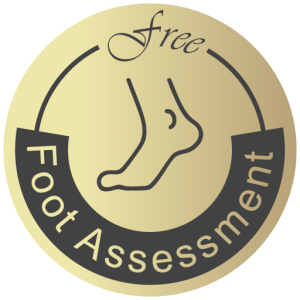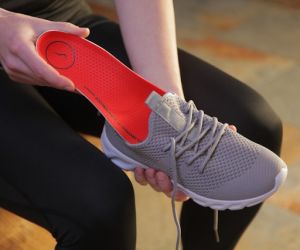



Many people suffer from muscle strain in foot, which occurs as a result of a sudden or involuntary muscle contraction, causing severe pain and thus affecting movement and walking. By choosing medical shoes and therapeutic products offered by Life Balance, your ability to move will improve. In this article, we will learn about this type of pain and how to prevent it.
Muscle strain in foot is an injury to muscles or the tendons that connect muscles to bones. This injury is classified into three grades, ranging from Grade I, which involves a slight tear in a few muscle fibers, to Grade III, which represents a complete muscle tear and requires specialized medical intervention.
The foot consists of a complex network of small and large muscles that work together to provide support, balance, and movement. When any of these muscles are forced to work beyond their capacity or are subjected to a sudden, unexpected movement, they become prone to strain and tearing, causing pain and limiting the range of motion.
Muscle Strain in Foot usually results from a combination of factors and is often a cumulative result of stress rather than a single incident:
 Previous injuries that have not fully healed, making the muscle weaker and more susceptible to future strain.
Previous injuries that have not fully healed, making the muscle weaker and more susceptible to future strain.Symptoms vary depending on the severity of the injury but generally include a set of clear signs:
Prevention of muscle strain in foot is always better than cure, and the risk of injury can be significantly reduced by adopting healthy habits. The type of shoe plays a pivotal role in this context. Traditional narrow shoes force the foot into an unnatural position, increasing the risk of injury. To avoid strained muscle bottom of foot, healthy footwear must be chosen.

When an injury occurs, initial treatment aims to reduce pain and inflammation. The R.I.C.E. principle (Rest, Ice, Compression, Elevation) can be applied immediately:
Don’t let muscle strain sideline you from your goals. Our compression socks deliver targeted support to reduce swelling and promote healing. Explore our footcare range and accelerate your recovery today.
Identifying muscle strain in foot is the first step in caring for foot health and alleviating stress. By using the products offered by the Life Balance website, your ability to perform your daily tasks will improve.
Recovery time largely depends on the grade of the injury. A mild Grade strain may take a few days to two weeks for full recovery, while moderate Grade II cases may require several weeks. A complete Grade III tear might take months of treatment and rehabilitation.
Although the symptoms are sometimes similar, there is a fundamental difference. A muscle strain, also known as a pulled muscle under foot, is an injury to the muscle itself or to the tendon that connects it to the bone. A sprain, on the other hand, is an injury to the ligaments, which are the tissues that connect bones at a joint.

